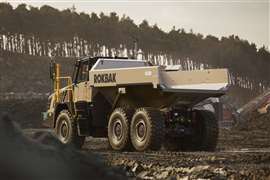Read this article in Français Deutsch Italiano Português Español
Texas and Alaska infrastructure awarded a ‘C’ grade
03 March 2025
 Teslin Lake Bridge on the Alaska Highway (Image: pictureguy32 via AdobeStock - stock.adobe.com)
Teslin Lake Bridge on the Alaska Highway (Image: pictureguy32 via AdobeStock - stock.adobe.com)
The infrastructure in the US states of Alaska and Texas have both been awarded a ‘C’ grade, according to the American Society of Civil Engineers’ (ASCE) latest ‘Report Card’.
The ASCE releases a report card every four years and the next full version is expected to be released on 25 March.
Prior to that date, however, the ASCE has been releasing scores state by state.
Last week, it revealed that Alaska’s grade has improved to a ‘C’ in 2025, from the last report in 2021. ‘C’ is classified as “mediocre, requires attention”.
Alaska scored highest for its bridges scored (‘B+’) and its dams (‘C+’). But it failed to rise above a ‘C’ in any other category: rail, roads, solid waste, transit (‘C’); aviation, ports, public parks (‘C-‘); drinking water, energy (‘D+’); and marine highways, wastewater (‘D’).
The report card for Alaska noted that the state’s geography, climate, seismic activity and harsh winter pose challenges to its built environment. But federal investments totalling US$9.3 billion as of December 2024 have accelerated almost 4,000 projects, it noted. Of that investment, 17% is supporting broadband projects and 15% is going towards clean water work.
In late February, the ASCE revealed that Texas’s infrastructure also scored a ‘C’ grade.
Of the 16 Texas categories, two saw grade increases: aviation went up to a ‘B’ grade, and roads scored a ‘C-‘. Bridges still performed highly at ‘B-‘ But drinking water only registered a ‘D+’, stormwater a ‘C-‘, and wastewater a ‘D-‘.
Late last year, the ASCE awarded Montana’s infrastructure a ‘C-‘, Maine’s a ‘C’, Mississippi’s a ‘C-‘, and Wisconsin’s a ‘C+’.
STAY CONNECTED


Receive the information you need when you need it through our world-leading magazines, newsletters and daily briefings.
CONNECT WITH THE TEAM










